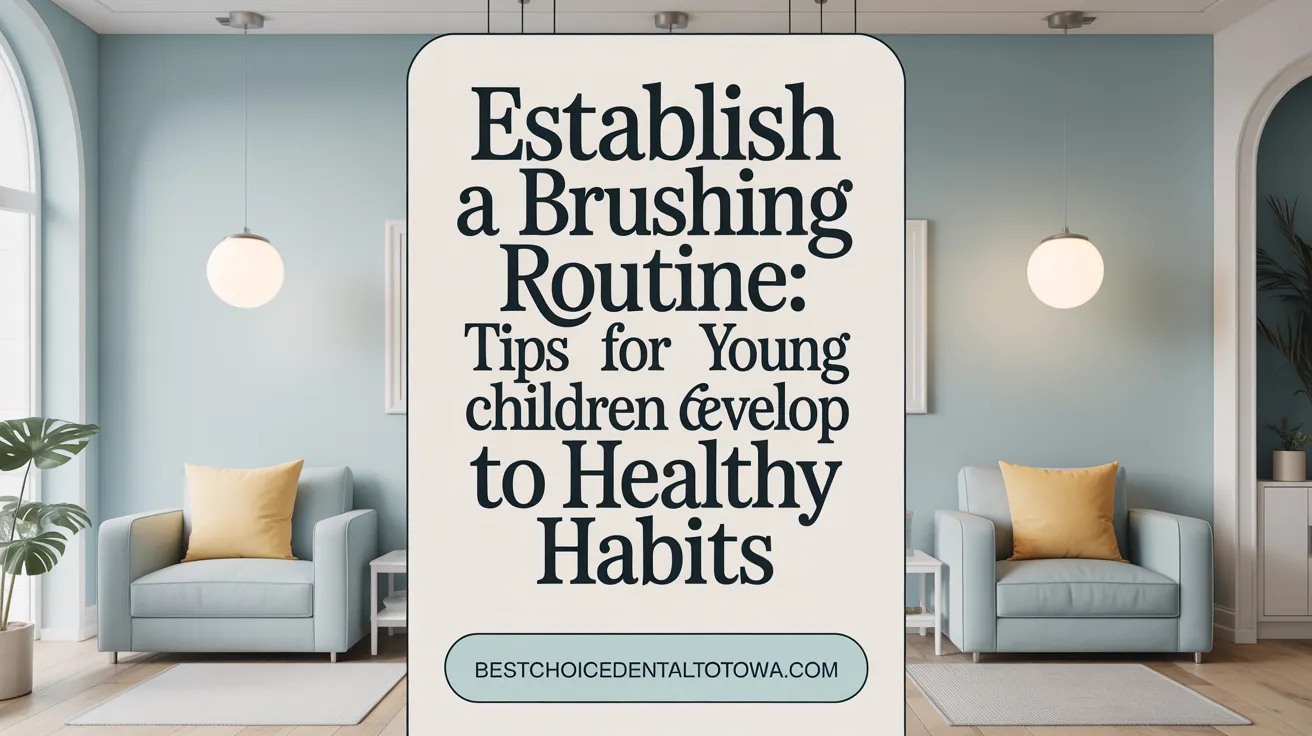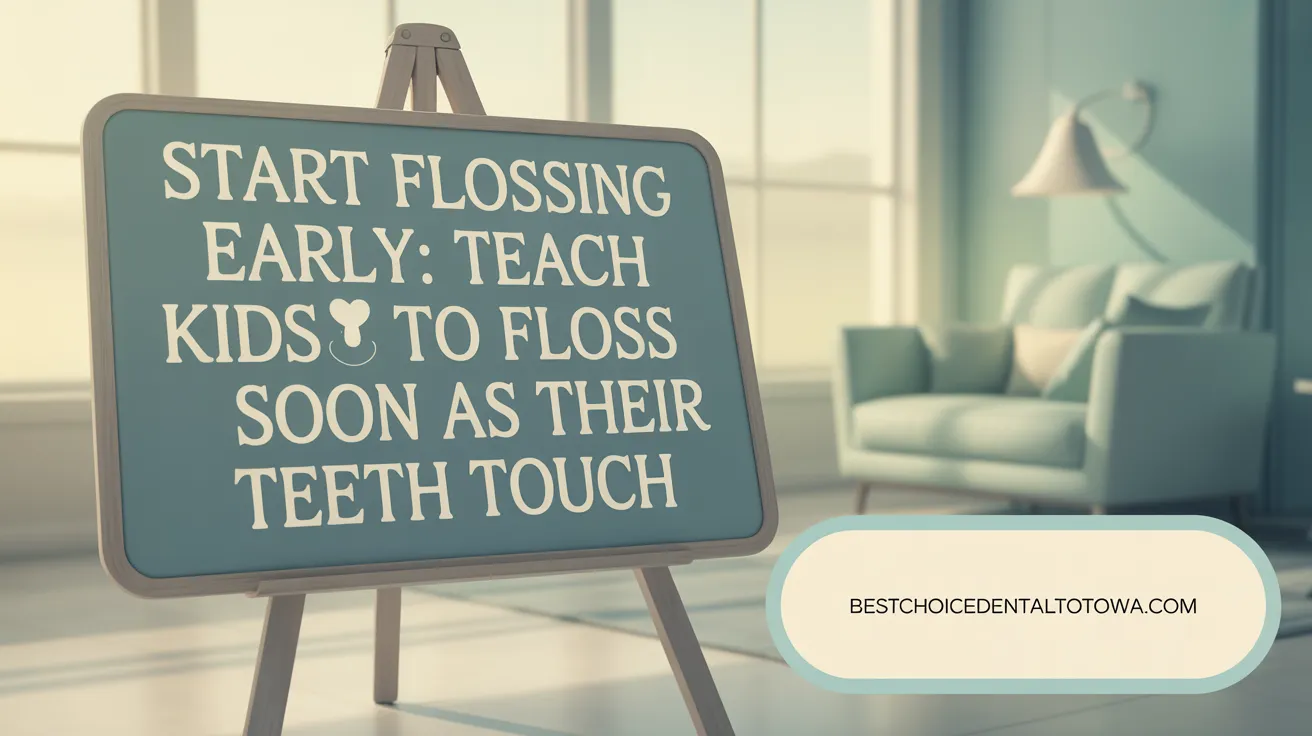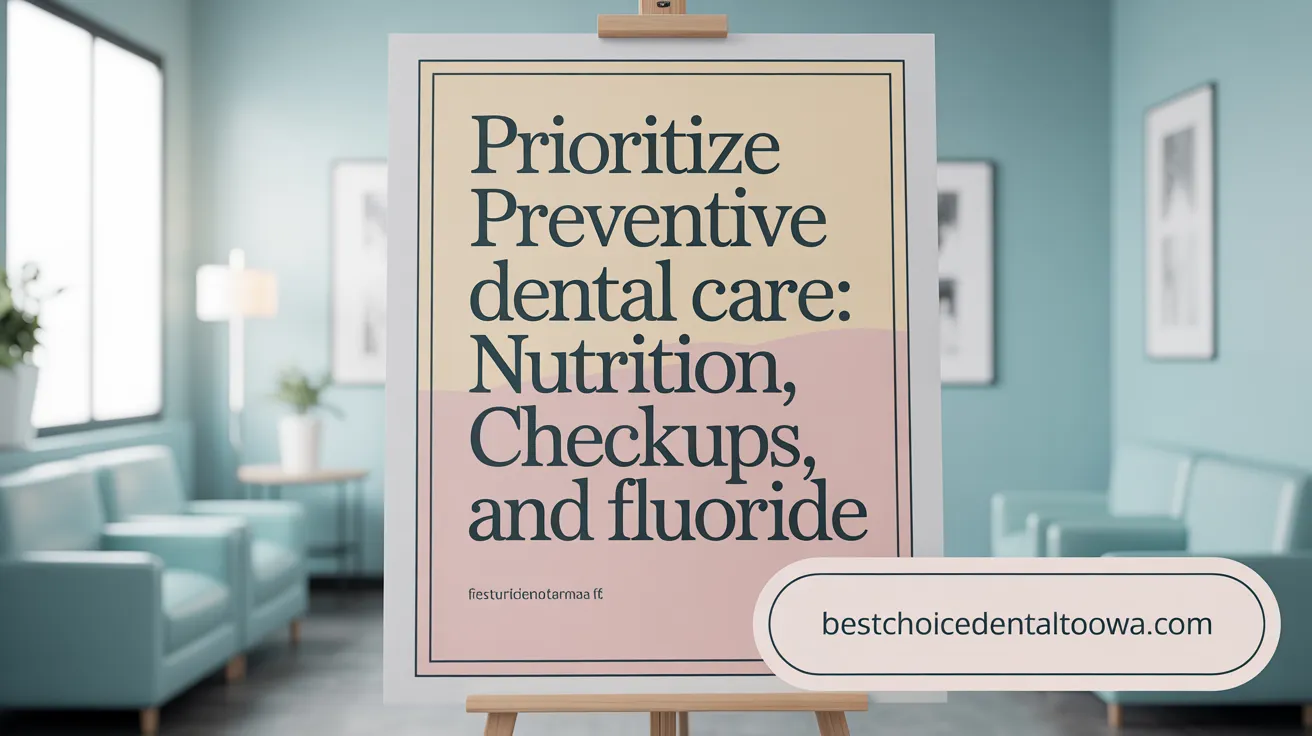The Importance of Early Oral Hygiene Habits in Children
Starting oral hygiene in infancy
Good oral hygiene begins even before a child’s first tooth appears. Gently wiping a baby’s gums twice daily with a soft, damp cloth helps remove bacteria and sugars, laying the groundwork for strong dental health. This early care also eases teething discomfort and familiarizes infants with oral care routines.
Role of baby teeth
Although baby teeth are temporary, they are vital for guiding the proper growth and alignment of permanent teeth. Healthy baby teeth prevent pain, infection, speech difficulties, and eating problems, all of which can affect a child’s confidence and development. Establishing brushing habits with a soft toothbrush from the appearance of the first tooth helps protect these important teeth.
Benefits of early dental care
Starting dental visits by the first birthday or within six months of the first tooth enables early detection and prevention of dental issues. Consistent care, including supervised brushing twice a day with fluoride toothpaste and early introduction of flossing, reduces the risk of cavities and gum disease. Early oral hygiene habits build a foundation for lifelong dental health and help avoid common childhood oral problems.
Getting Started: Establishing a Brushing Routine for Young Children

When and how to start brushing
Begin oral hygiene routines in infancy early by gently wiping gums to aid teething with a soft, damp cloth even before teeth appear. Once the first teeth come in, usually around six months, start brushing twice daily for kids using a small, soft-bristled toothbrush designed for children. Initially, use water only under 18 months for cleaning until the child is about 18 months old.
Supervision and technique
Children require adult supervision while brushing until they develop sufficient motor skills, typically around age 6 to 8. Help children place a pea-sized amount of toothpaste on the brush and guide them to brush all tooth surfaces using gentle, circular motions at a 45-degree angle to the gum line. Supervising children's toothbrushing and supervised brushing for young children is essential. Encourage spitting out toothpaste rather than swallowing to avoid excess fluoride ingestion.
Use of toothpaste and brushes
From 18 months to six years, use a low-fluoride toothpaste for 18 months to six years in a small pea-sized amount. After six years, transition to standard fluoride toothpaste from six years. Replace toothbrushes every three to four months or sooner if bristles become frayed. For added motivation and ease, consider using electrical toothbrushes for children over three.
Making brushing fun
Keep brushing enjoyable by playing favorite songs, engaging in using stories and games to teach brushing, and allowing children to pick toothbrushes and toothpaste flavors that appeal to them. Reward systems for kids' brushing like stickers or charts can foster positive associations with dental care, helping establish consistent brushing habits.
Together, these approaches build a strong foundation for lifelong oral health by making brushing a routine, supervised, and engaging activity for young children.
Flossing Fundamentals: When and How to Teach Kids to Floss

When Should Children Start Flossing?
Children should begin flossing as soon as their teeth start touching, which usually occurs around ages 2 to 3. Establishing flossing early helps remove plaque from areas that brushing cannot reach. Since young children lack the dexterity to floss independently, parental assistance is essential until they develop the necessary skills—generally by ages 8 to 10. For more information, see Flossing ages 2 to 3.
Effective Flossing Techniques and Tools
Proper flossing involves winding about 18 inches of floss around the middle fingers, gently sliding it between teeth using a back-and-forth motion, and curving the floss into a 'C' shape around each tooth to clean beneath the gumline. Various tools can support this process, including traditional waxed or unwaxed floss, flavored options to make it more appealing, floss picks, and pre-threaded flossers. Water flossers are helpful adjuncts for cleaning around braces but should not replace string floss for removing plaque between teeth. Learn more about Flossing techniques and Floss holders for kids.
The Role of Parents: Assistance and Supervision
Parents should supervise and assist their children with flossing until they have the fine motor skills to do it effectively on their own. Teaching by example and guiding children to use proper techniques fosters confidence and ensures thorough cleaning. Positive reinforcement and patience during this learning phase encourage consistent habits. Helpful advice on Supervised flossing for children and Parental guidance for teaching flossing can assist parents.
Making Flossing Fun and Engaging
Incorporating games, stories, songs, or reward charts can transform flossing into an enjoyable activity. Allowing children to select their favorite floss flavors or colorful floss holders increases their enthusiasm. Family participation, such as flossing together, also motivates children by setting a good example and making oral care a shared, positive routine. For creative approaches, see Making flossing fun for kids and Positive reinforcement for flossing.
Motivation and Engagement: Creative Ways to Encourage Consistent Oral Care

Using rewards and games
Motivating children to brush and floss regularly can be fun and effective when incorporating reward systems for oral hygiene and games. Simple incentives like stickers, points, or small prizes can make each brushing session feel like an achievement. Visual brushing calendars with smiley faces or stars help kids track their progress and stay motivated over time.
Choosing kid-friendly dental products
Letting children pick their own toothbrushes and toothpaste can spark their interest in oral care. Choosing toothbrushes and toothpaste featuring favorite characters and flavored toothpaste options make daily routines appealing. These choices empower kids to take ownership of their hygiene, increasing enthusiasm for brushing and flossing.
Modeling behavior and family routines
Children learn best by example. Brushing teeth as a family and flossing together demonstrates the importance of these habits. Establishing a consistent routine—such as brushing after breakfast and before bed—helps children understand expectations and reinforces positive habits. Family involvement fosters a supportive environment for maintaining oral health.
Music, stories, and timers
Transform oral care into an enjoyable experience by playing music or singing songs during brushing and flossing. Using stories to motivate toothbrushing or using apps with interactive brushing timers encourages children to brush for the recommended two minutes. Such creative activities turn routines into engaging moments, helping kids develop lifelong healthy habits.
Preventive Dental Health: Nutrition, Routine Checkups, and Expert Care

Role of Diet and Fluoride
Good nutrition is essential for strong teeth and gums in children. A balanced diet for dental health rich in calcium, vitamin D, and phosphorus supports dental health. Limiting sugary snacks and acidic drinks reduces the risk of cavities by preventing enamel weakening. Encouraging water intake, especially fluoridated tap water and cavities, helps wash away food debris and maintain a neutral oral pH. Fluoride strengthens tooth enamel and is a crucial component of cavity prevention, whether through toothpaste, mouth rinses, or professionally applied fluoride varnish.
Dental Visits and Sealants
Regular dental checkups should start by the child's first birthday, ideally within six months of the first tooth eruption. These visits allow early detection of any dental issues and professional cleanings to maintain oral health. Dental sealants are highly effective preventive treatments applied to back teeth, protecting against 80% of cavities by sealing grooves where plaque can accumulate. Routine visits every 3 to 12 months help monitor dental development and ensure timely preventive care.
Avoiding Harmful Habits
Avoid letting children go to bed with bottles or sippy cups containing milk or juice, as prolonged exposure to sugars increases cavity risk. Limiting sticky and sugary foods, discouraging extended pacifier use, and breaking thumb-sucking habits are important to prevent tooth misalignment and decay. Ensuring a smoke-free environment for healthy teeth also reduces cavity risks associated with secondhand smoke.
Overall Importance of Preventive Care
Starting oral hygiene early builds a foundation for lifelong healthy habits. Consistent brushing with fluoride toothpaste, daily flossing once teeth touch, balanced nutrition, and regular dental visits combine to prevent cavities, infections, and maintain bright, healthy smiles. Preventive care not only protects dental health but supports children's well-being, confidence, and ability to eat, speak, and play comfortably.
Lifelong Benefits of Fostering Healthy Dental Habits Early
Long-term advantages of early oral care
Starting dental care in infancy by gently wiping gums and introducing brushing when teeth appear sets the foundation for lifelong oral health. Early routines help prevent common childhood issues like cavities, infections, and problems with eating and speech.
Encouraging independence with supervision
Children typically begin brushing independently around ages 6 to 8, but supervision remains important to ensure thorough cleaning and proper technique. Guided flossing starting when teeth touch (around age 2 or 3) also supports effective plaque removal and builds confidence.
Building confidence and preventing cavities
Maintaining good habits from a young age, combined with regular dental visits, fluoride use, and fun brushing activities, helps children feel confident about their smiles. This early care reduces the risk of cavities, promotes healthy development, and supports positive self-esteem throughout their lives.
